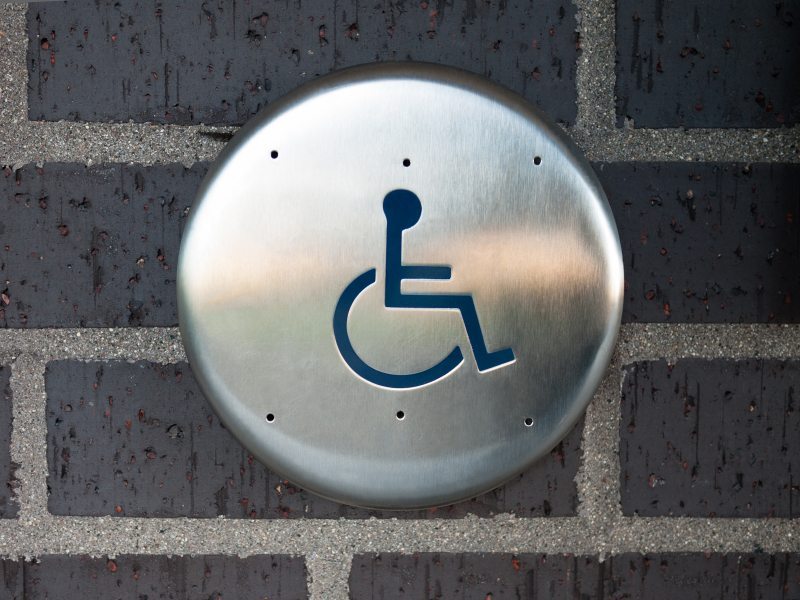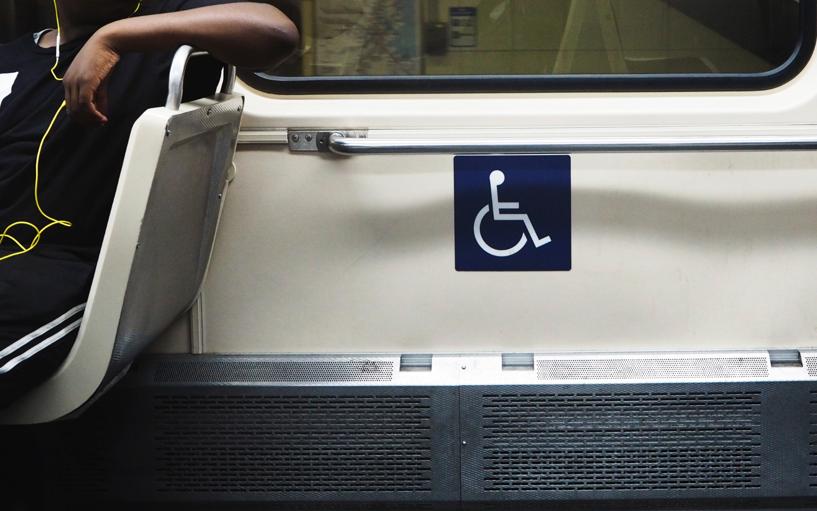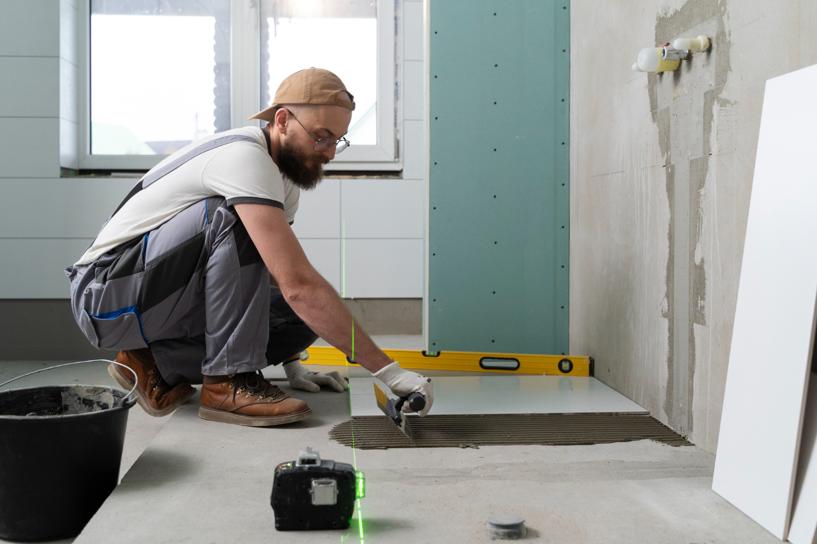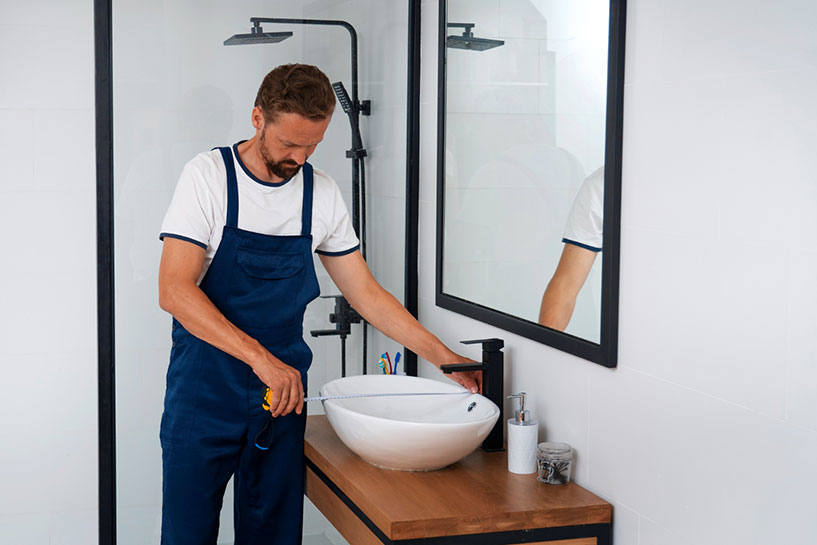Creating inclusive environments has become a key business goal in today’s world. When discussing accessibility, two terms often come up: “accessible” and “ADA compliant.” While these terms are related, they have distinct meanings, especially when creating an ADA compliant design.
Any time you are embarking on a renovation or construction project, there are many decisions to make, and things to learn, especially when trying to make a space wheelchair ready. Understanding terminology, like ADA compliant or accessible, can be extremely important when researching products. For bathrooms especially, there can be a range of possible showers and accessories available.
The key to creating a bathroom that meets legal requirements while offering a comfortable space for users is educating yourself about the different products available today.
Knowledge is power and we are here to outline the definitions of ADA and Accessible, so you get what you need to help your project go smoothly.
Note: be sure to consult with local building authorities to confirm which codes you need to comply with before purchasing.
Defining Accessibility
Accessibility refers to the design and provision of environments, products, and services that can be accessed and used by individuals of diverse abilities and disabilities. An accessible space eliminates barriers and ensures that everyone, regardless of physical or cognitive limitations, can navigate, participate, and enjoy the space independently and without discrimination.
This can be important, including physical features, communication, technology, and policies. Accessible design principles emphasize creating barrier-free environments, such as installing ramps, wider doorways, accessible parking spots, tactile signage, closed captioning, and assistive technology. For bathrooms, it involves creating a space that allows people with mobility limitations to use the room comfortably.
If a product is described as accessible, that means it is designed to help accommodate the accessibility needs is some capacity.
Understanding ADA Compliance
The most common question when differentiating between the two terms is: what is ADA compliant?
ADA stands for The Americans with Disabilities Act, a civil rights legislation enacted in 1990 to prohibit discrimination against people with disabilities. It aims to prevent discrimination against individuals with disabilities and ensure equal participation in all aspects of society, including employment, public services, transportation, and public accommodations.
It is important to note that ADA compliance is mandatory for certain entities, such as businesses open to the public, government buildings, and places of employment. Non-compliance with the ADA can lead to legal consequences, including lawsuits and fines. However, it is worth noting that ADA compliance sets a minimum standard for accessibility, and going beyond these requirements is always encouraged.
Key Differences Between Accessible and ADA Compliant
Scope of Application
The concept of accessibility is broader than ADA compliance. While ADA compliance specifically relates to the minimum legal requirements within the United States, accessibility can extend beyond legal obligations and encompass a global approach to inclusivity. Accessibility focuses on creating spaces and experiences that cater to diverse needs, regardless of legal obligations.
For example, to create an ADA compliant bathroom, a certain percentage of the stalls or showers must incorporate products that meet the guidelines outlined in the ADA Act, like a wheelchair accessible stall with a grab bar installed on the wall However, to create a more accessible bathroom space, you can make sure most or all stalls are larger and have grab bars to create a bathroom that is easy for all individuals to use. You can also add additional features to help vision impaired visitors, like audio assist technology.
Standards and Guidelines
ADA compliance strictly follows the guidelines outlined in the ADAAG. These guidelines provide detailed specifications for various elements of accessibility, such as ADA showers, toilets, or other elements.
In contrast, accessibility principles may incorporate additional guidelines and best practices from international standards, such as the Web Content Accessibility Guidelines (WCAG), Universal Design principles, and other industry-specific guidelines.
Legal Requirements
ADA compliance is legally binding and mandatory for entities falling under its purview. Failure to comply with ADA guidelines can result in legal consequences. On the other hand, accessibility, although strongly advocated for, may not always have legal obligations associated with it. However, many countries have their own accessibility regulations and standards that align with the principles of inclusivity.
Flexibility and Innovation
Accessibility allows for flexibility and encourages innovative solutions to address diverse needs. It recognizes that not all disabilities are the same and that individuals may have unique requirements. It emphasizes a person-centered approach, promoting user feedback and continuous improvement.
ADA compliance, while crucial, may sometimes lack the flexibility to accommodate rapidly evolving technologies and emerging accessibility trends. For example, if you want to install an ADA bench or ADA shower chairs, you must choose products that fit the guidelines addressed in the ADA Act.
ADA Compliant Showers
Once you understand the ADA accessible meaning, it’s important to learn how to design an ADA accessible washroom.
The ADA act dictates certain requirements for public accommodations and commercial facilities in the United States. This means that any public or commercial building‚ must comply with ADA requirements. ADA usually does not apply to private residences. The latest update was in 2010. The 2010 ADA Standards for Accessible Design can be accessed here. There are many Freedom Showers available to meet the latest standards.
Two styles of ADA Showers
There are two styles of ADA compliant showers. ADA Roll in Shower and an ADA Transfer Shower. See the chart below for a breakdown of the differences.
|
Features |
ADA Roll In Showers | ADA Transfer Showers |
|
Usage |
To accommodate someone entering the shower in a their wheelchair or a rolling shower chair |
To accommodate someone approaching the shower in their wheelchair and transferring onto the shower seat |
| Inside dimension | 60” x 30” min. inside clearance | 36” x 36” |
| Finished threshold height | ½” maximum | ½” maximum |
| Accessories needed |
|
|
Both ADA roll in showers and transfer showers are available in one piece units for new construction, or multi-piece units for remodeling. You can also just purchase the shower pan and tile the walls.
Again, please check with local authorities for additional requirements. There may be regional differences on top of the ADA code requirements. For example, California State does not approve ADA transfer Showers, only Roll in Showers.
Accessible Showers
Accessible Showers share some of the features that ADA compliant showers have, but they are designed for residential use. There are rarely code compliance requirements for residential use, so you can choose from many different sizes and styles.
Accessible Showers:
- are available in many sizes, including 60” and 54″ bathtub replacement models with end drains, smaller 48” models, and larger units to accommodate someone in a wheelchair and a caregiver if necessary
- have roll in threshold for wheelchair access. Most have a beveled 1” threshold
- can ship with any accessories. You can field install grab bars and plumbing fixtures in the locations that suit the user
- can accommodate any style wall mounted folding shower seat
- are mostly multi-piece units for remodeling projects
Installing an accessible shower in a home is a great way to plan for aging in place. You can use an ADA shower in a home, but they are often too wide to fit in the standard 60″ framing pocket that exists in most residential bathrooms. Also, many ADA showers come in one piece‚ which can be difficult to get into an existing room in a home, so be sure to choose a multi-piece unit.
Other Essential Bathroom Accessories: ADA Compliant vs Accessible
ADA Compliant
In addition to an ADA roll in Shower, you may find a few common bathroom accessories in ADA-compliant bathrooms.
Grab Bars
ADA-compliant bathrooms incorporate sturdy and strategically placed ADA grab bars to provide stability and support. These bars are typically installed near toilets, bathtubs, and showers, enabling users to maintain balance and transfer safely.
ADA guidelines specify the ADA shower grab bar height, diameter, and location of handrails to ensure secure and comfortable navigation in the bathroom.
Toilet Accessories
ADA-compliant toilets often feature specific accessories, such as raised toilet seats or adjustable height options. These additions facilitate easier transfers for individuals with mobility impairments.
Sink and Faucet
ADA guidelines require sinks to have sufficient knee clearance, allowing users to access the sink while seated in a wheelchair. Faucets with lever handles or touchless operation are also preferred to accommodate individuals with limited hand dexterity.
Accessible
These bathrooms may include additional accessories and design elements to enhance accessibility.
Universal Design Fixtures
Accessible bathrooms often employ universal design principles, incorporating fixtures that people of various ages, sizes, and abilities can comfortably use. This may include adjustable-height countertops, shower benches, and wider doorways.
Non-Slip Flooring
To ensure safety, accessible bathrooms often feature non-slip flooring materials. This reduces the risk of accidents and provides a stable surface for individuals using mobility aids.
Enhanced Lighting
Good lighting is essential for individuals with visual impairments or limited eyesight, especially because over seven million Americans have vision impairment. Accessible bathrooms may include bright and well-distributed lighting fixtures, ensuring optimal visibility.
Starting Your Renovation Project
If you are remodeling or building a home‚ you probably don’t need to meet ADA requirements for ADA design, unless a government agency is funding the remodel. Again, check with your local requirements to be sure.
Now you know the difference between ADA and Accessible Showers. You can use this information to select the product that best suits your project to create the ideal ADA or accessible bathroom. Do you have more questions about ADA compliance or accessible showers? Please comment below, we’d love to hear from you.
If you enjoyed this post, please consider sharing it on Facebook or Twitter below.
P.S. We’d love to meet you on Twitter here or on Facebook here.





Hi
So, I work in a residential setting, and I was wondering how many showers are ADA compliance for 16 -20 people? Should we have 2 or more showers for the number of people living in the home?
Thanks
Please check with your local inspection office to find out the number of ADA compliant showers or tubs required in specific facilities. This may vary depending on the number of floors, the purpose of the building and the needs of the residents as well as State or local laws.
Hello.
We are doing a hotel renovation project in Pennsylvania.
It has 320 guest rooms.
According to ADA regulations we are supposed to have 12 accessible rooms (8 tubs and 4 roll-in showers).
Could you please advice if there any regulation on transfer showers and can we substitute roll-in showers with transfer ones?
Thank you.
Best regards,
Victor.
This is a great question Victor, thank you for reaching out to us regarding ADA compliance. The ADA standards for Accessible Design are guidelines for Federal ADA compliance in the USA. The guide lists both a transfer shower and a roll in shower as compliant, but does not specify when one should be used over the other. However, often times state or municipal requirements are more specific. For example, we know that California only accepts Roll in Showers, not Transfer showers. We recommend confirming with your local permit or inspection office to make sure substituting roll-in showers with transfer showers would be compliant. We do sell ADA bathtubs, and both the roll in showers and transfer showers. Once you confirm what you need, we’d be happy to prepare a quote for you. Call 1-877-947-7769 to get a project quote or if you have any more questions.